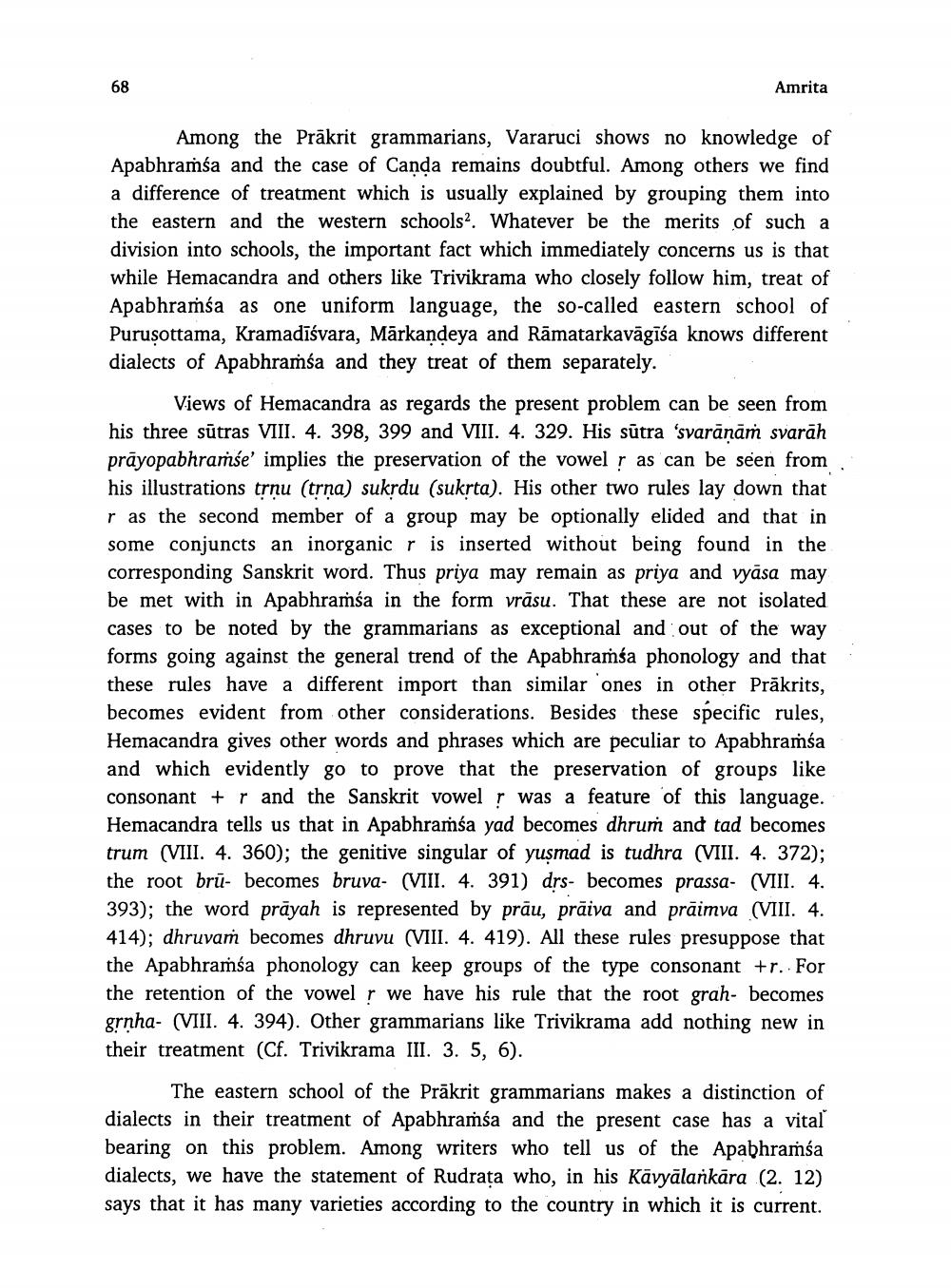________________
68
Amrita
Among the Prākrit grammarians, Vararuci shows no knowledge of Apabhramśa and the case of Canda remains doubtful. Among others we find a difference of treatment which is usually explained by grouping them into the eastern and the western schools. Whatever be the merits of such a division into schools, the important fact which immediately concerns us is that while Hemacandra and others like Trivikrama who closely follow him, treat of Apabhraíśa as one uniform language, the so-called eastern school of Purusottama, Kramadīśvara, Mārkandeya and Rāmatarkavāgīša knows different dialects of Apabhramsa and they treat of them separately.
Views of Hemacandra as regards the present problem can be seen from his three sūtras VIII. 4. 398, 399 and VIII. 4. 329. His sūtra 'svarānām svarāh prāyopabhramće' implies the preservation of the vowel ? as can be seen from his illustrations trnu (trna) sukrdu (sukrta). His other two rules lay down that r as the second member of a group may be optionally elided and that in some conjuncts an inorganic r is inserted without being found in the corresponding Sanskrit word. Thus priya may remain as priya and vyāsa may be met with in Apabhramsa in the form vrāsu. That these are not isolated cases to be noted by the grammarians as exceptional and out of the way forms going against the general trend of the Apabhraṁsa phonology and that these rules have a different import than similar ones in other Prakrits, becomes evident from other considerations. Besides these specific rules, Hemacandra gives other words and phrases which are peculiar to Apabhramsa and which evidently go to prove that the preservation of groups like consonant + r and the Sanskrit vowel ? was a feature of this language. Hemacandra tells us that in Apabhraíba yad becomes dhru and tad becomes trum (VIII. 4. 360); the genitive singular of yusmad is tudhra (VIII. 4. 372); the root brū- becomes bruva- (VIII. 4. 391) drs- becomes prassa- (VIII. 4. 393); the word prāyah is represented by prāu, prāiva and prāimva (VIII. 4. 414); dhruvam becomes dhruvu (VIII. 4. 419). All these rules presuppose that the Apabhramśa phonology can keep groups of the type consonant +r. For the retention of the vowel r we have his rule that the root grah- becomes grnha- (VIII. 4. 394). Other grammarians like Trivikrama add nothing new in their treatment (Cf. Trivikrama III. 3. 5, 6).
The eastern school of the Prākrit grammarians makes a distinction of dialects in their treatment of Apabhramśa and the present case has a vital bearing on this problem. Among writers who tell us of the Apabhramba dialects, we have the statement of Rudrata who, in his Kavyalankāra (2. 12) says that it has many varieties according to the country in which it is current.




